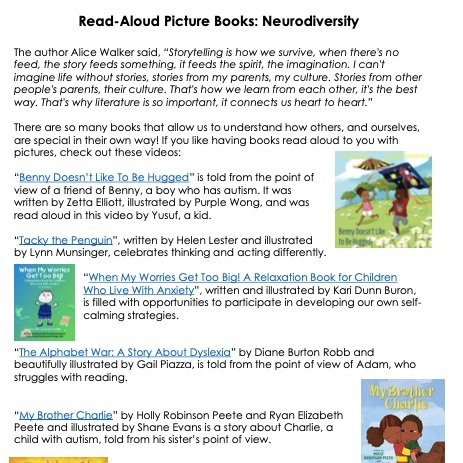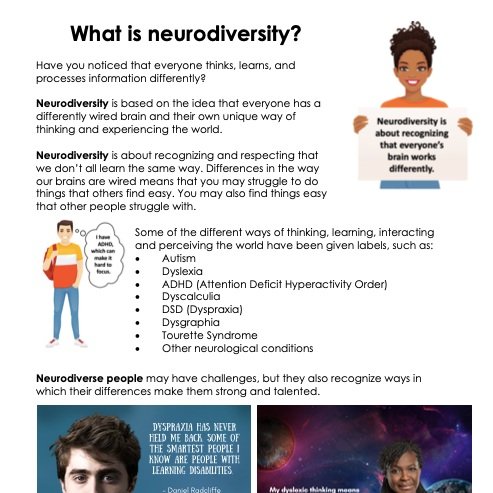Your language-teaching mission, should you choose to accept it, is to celebrate neurodiversity in your classroom during April (and all year long!).
Image: https://today.uconn.edu/2020/01/engineering-new-learning-environment-neurodiversity/#
DID YOU KNOW? In the 1990s a journalist named Harvey Blume and an autism advocate named Judy Singer wanted to create a new political category so that they could fight for the rights of those whose brains worked differently. They also wanted to celebrate the strengths that many neurodiverse people have. For example, people with ADHD are often creative problem-solvers, and people with dyslexia will often have great visual thinking abilities. Now in the 2020s there is a better understanding that there is no ‘normal’ brain, and that everyone’s brain is unique and works ‘differently’. However, many people with conditions like autism choose to continue using the term ‘neurodiverse’ because, according to an article by Howard Timberlake, “it is a useful and positive way of defining their identity and community.” Now, the United Nations has a World Autism Awareness Day every April 2, and many countries use April as the month to raise awareness and celebrate the contributions of neurodiverse people.
How can you celebrate neurodiversity in your ELL or language classroom this April?
Talk explicitly about neurodiversity and how it helps us create a tapestry of different minds in our society that can contribute different perspectives. For example, Billie Eilish recently won an Oscar for her song “No Time to Die”. In class, you can mention that Billie is neurodiverse: she has Tourette syndrome, which means that she has involuntary tics, and she is synesthetic, which means her senses, like vision and hearing, can blend together.
RESOURCE: Neurodiversity Read-Aloud Links (great to send home to elementary parents)
RESOURCE: What is Neurodiversity? (info poster for the classroom, adapted from Neurodiversity Celebration Weeks’ excellent powerpoints)
Share resources with your colleagues on ways to celebrate and support neurodiverse students. Shameless plug: On the Lesson: Impossible site, there are two podcast episodes that you can listen to with Michael Weingarth and Drew Thompson and a blog post (with a PDF you can share, below) about “5 Minute Differentiation Strategies”. That is the tip of the iceberg for podcasts and posts about neurodiversity!
RESOURCE: 5 Minute Differentiation Strategies
Highlight neurodiverse individuals in your classroom while making connections to the content. I have a few activities that I created originally for the Edmonds School District to celebrate neurodiversity within various content areas which you can check out here. For example, I drew connections to Alan Turing for a cryptography math lesson and Dr. Maggie Aderin-Pocock for a science lesson on making a spectroscope.
Listen to neurodiverse people about their experiences, and avoid organizations that center anyone other than the neurodiverse person themselves. Beware of resources from organizations like Autism Speaks, which according to the Autistic Self Advocacy Network, “uses damaging and offensive fundraising tactics which rely on fear, stereotypes and devaluing the lives of people on the autism spectrum”. Both Michael and Drew, the two people I’ve interviewed about neurodiversity, identify as neurodiverse, and you can follow Michael on Twitter!
How do you celebrate neurodiversity in the classroom? Feel free to share in the comments!





















